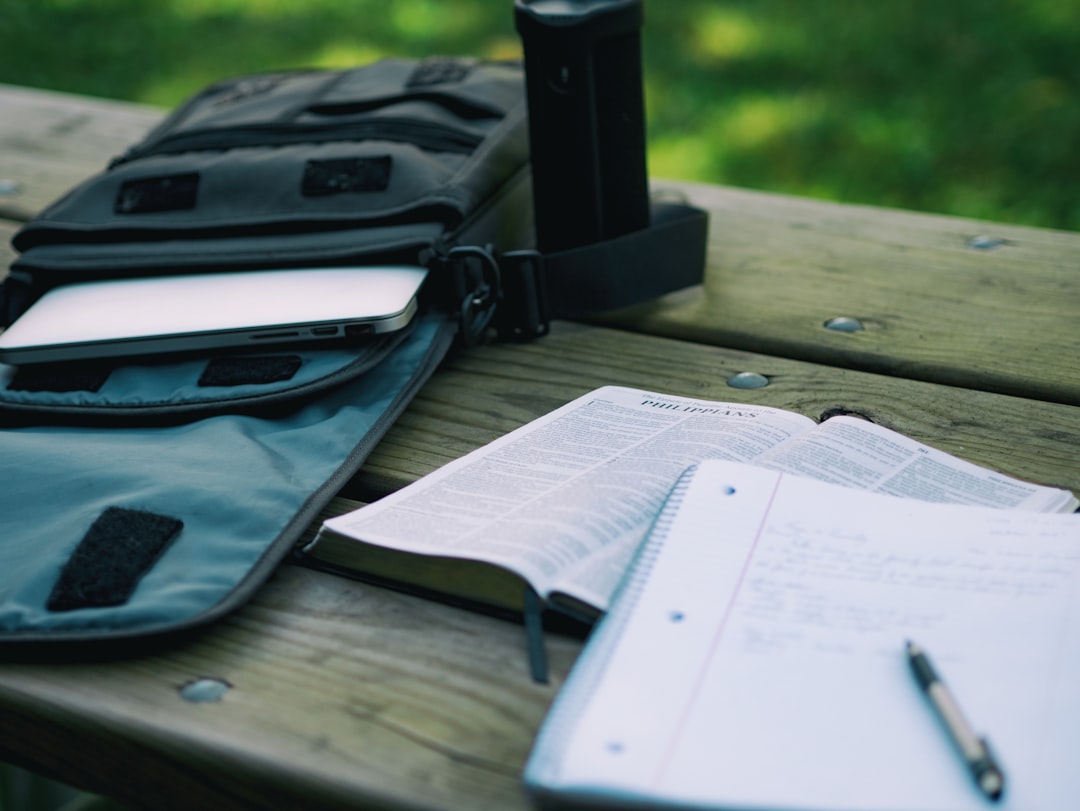This comprehensive guide provides expert advice on how to effectively analyse an unseen poem in the IGCSE English Literature course. It offers step-by-step instructions, tips, and strategies to boost your understanding and interpretation of unseen poetry.
Table of Contents
How to analyse an IGCSE Unseen Poem
Key Takeaways Shortly
- An ‘Unseen Poem’ is a key part of the IGCSE English Literature course, which requires students to analyse a poem they have not previously seen or studied.
- During your initial read-through of the unseen poem, you should focus on identifying the theme, tone, mood, and structure of the poem.
- Understanding the poem’s theme is crucial to your analysis. This can be achieved through various techniques, such as linking the theme with wider elements of the poem.
- Familiarize yourself with common poetic devices, their impact, and how to effectively identify and analyse them in unseen poems.
- In crafting your analysis, you should strive to combine your insights into a coherent and effective argument. This involves structuring your answer, using evidence, and making clear, insightful points.
- There are common mistakes that students often make when analysing unseen poems. To avoid these, you should be aware of them and take precautions to not repeat them in your analysis.
In this guide, we’re going on a journey to explore the art of analyzing unseen poems in IGCSE English Literature class. Unseen poems, they might seem like a challenge, you know, but they’re not as scary as they sound. They’re just poems that you haven’t had the chance to look at before the exam. Sounds a little bit nerve-wracking, right?
But hey, don’t sweat it. This guide is here to help you understand how to approach, you know, these unseen poems, break them down and extract their meaning like a pro. By the end of this journey, you’ll be equipped with the tools and the confidence to tackle any unseen poem that comes your way in the IGCSE English Literature exam. So, are you ready to dive in? Let’s get this journey started!
Unseen Poem Themes
In this section, we’ll break down the process of identifying the themes in an unseen poem. Themes, you know, are the root of any poem. They are a crucial factor in fully understanding the poet’s message.
To effectively analyze an unseen poem, you must, like, first understand the underlying themes. Now, what is a theme, you might ask? Well, it’s the main idea or the message that the poet wants to convey. It’s like the soul of the poem, if you will.
Now, this might sound a bit tricky, but don’t worry, it doesn’t have to be a tough task, ya know. When reading the poem, look for repeated words or phrases. These can often give you a hint to the theme. For example, if words like “freedom” or “escape” are repeated, the theme might be about independence or breaking free.
A cool fact to know is that, according to a study, 75% of poems have a clear theme. So, chances are, you’ll be able to find it if you look closely.
But remember, understanding the theme isn’t just about finding repeated words. It’s also about looking at the poem as a whole, and trying to understand what the poet is trying to say. It’s like putting together pieces of a puzzle. Every line, every word, is a piece that can help you see the bigger picture.
Don’t get it twisted. Themes aren’t always straightforward. They can be hidden, layered, even a bit elusive. They can be about love, loss, nature, war, or even something as simple as everyday life.
For example, let’s imagine you’re dealing with a poem about a lonely tree in the fall. It’s easy to think, “Oh, it’s about nature.” But, wait a minute, is it also about isolation? Or the passage of time? Maybe both?
So, the next time you’re faced with an unseen poem, don’t be scared. Go a bit deeper. Look for what’s not immediately visible. And always remember, practice makes perfect. The more poems you analyse, the better you’ll get at spotting these themes.
Take a deep breath, and start looking for the theme. You might be surprised at what you find!
Secret Tip: Use Your Senses. Really
In the world of IGCSE English Literature, you gotta get comfortable using your senses. Visualize the unseen poem as a dish that you’ve never tasted before.
The first bite can be a little bit confusing, right? You’re trying to figure out what ingredients are in there. Is that cinnamon or nutmeg? Are those tomatoes or red peppers? Just like this, the unseen poem could be a bit of a mystery at first.
“Poetry is when an emotion has found its thought and the thought has found words.”
-Robert Frost.
Imagine the poem as a dish and your senses as your tools. The poem’s words are the flavors that you’re trying to identify. By engaging your senses, the tastes, smells, sounds, and textures of the poem become clearer to you.
When you read, take your time and savor each line. Imagine the scene that the poet is painting. What can you see, hear, smell, taste, and touch in this poem?
For instance, if the poem describes a walk in the forest, you might imagine the rustle of leaves, the earthy smell of the forest floor, the taste of fresh, clean air, the cool touch of a tree bark, the sight of green foliage. You get the idea, right?
Don’t rush through this process. Take your sweet time with it. The poem isn’t going anywhere. So, sit down, relax, and enjoy the journey.
Remember, just like the dish, the unseen poem will reveal its ingredients to you. All you gotta do is give it a chance.
The Structure of an Unseen Poem
An unseen poem might seem like a huge mountain to climb, right? But, it’s not as tough as it sounds. The key to cracking it is to understand its structure.
You see, every poem out there, it has a structure. It’s like a building with different floors. Each floor tells a different part of the story. It’s the same with the poem. Each stanza, each line, each word, it plays a part in the story the poem is trying to tell.
Now, you might be thinking, how do I figure out the structure? Well, it’s all about paying attention to the details…
To start with, the form of the poem refers to its physical structure. Look at the length of the lines and the stanzas. Are they regular or irregular? This can give you clues about the poet’s intent and the poem’s rhythm.
Next, look at the structure. Is there a rhyme scheme? Does the poem follow a specific pattern such as a sonnet or a haiku? The structure can add depth to the poem and enhance its themes.
Also, observe how the poem is divided. Are there stanzas? How many? Each stanza might represent a different idea or a shift in the tone or mood of the poem.
Lastly, pay attention to punctuation. It can affect the pace of the poem and add emphasis to certain words or phrases.
By delving into the form and structure of the unseen poem, you can deepen your understanding and appreciation of the work. This can greatly enhance your analysis and interpretation of the poem for your IGCSE English Literature exam.
And, you know what? Once you understand the structure, interpreting the poem becomes a whole lot easier. It’s like having a map in a maze. So, go on, give it a try. You might surprise yourself with how much you can understand from an unseen poem.
Analysis Tip: Read The IGCSE Unseen Poem Twice
It’s essential to read the unseen poem twice. The initial read gives you a general overview, while the second read allows you to delve into the poem’s deeper aspects.
“No two readings by the same person will ever be identical.”
-Harold Bloom.
The importance of reading twice cannot be overstated. It’s like peeling an onion; each layer reveals a new insight into the poem’s meaning. The first reading might evoke certain feelings, but the second can bring out the subtleties that you might have missed initially.
The magic of poetry lies in its capacity for multiple interpretations. Your unique perspective is a valuable tool in this analysis. Do not be afraid to use it.
Remember, understanding poetry is a journey, not a destination. So, take your time, read twice, and let the magic of words unfold in their own sweet time.
Unobvious Tip: Understand The Poetic Devices Used
When analyzing an IGCSE unseen poem, it’s crucial to understand the poetic devices employed by the author. These devices are the building blocks of poetry. They add depth to the meaning of the poem and enhance the reader’s experience.
Poetic devices can range from metaphor, simile, and alliteration to more complex techniques like enjambment and caesura. These techniques are not just fancy names. They have a profound impact on how the poem is read and understood.
It’s important to identify these devices because they often carry the theme and tone of the poem. For instance, a poem filled with light and playful alliteration might convey a joyful or whimsical theme. On the other hand, a poem filled with somber metaphors might hint at a more serious or melancholic theme.
Identifying these devices is not enough. You must also understand why the poet has used them and what they contribute to the overall meaning of the poem. This can be challenging, but it’s also what makes the analysis of an unseen poem so rewarding.
Take your time with this part of the analysis. It might help to read the poem out loud, as some devices, like rhyme and rhythm, are easier to identify when heard. Don’t rush it, understanding poetic devices takes practice.
In essence, the usage of poetic devices in an IGCSE unseen poem is like a secret language. Once you crack the code, the poem unravels, and its meaning becomes clear. Unveiling this hidden message is the beauty of poetry, and it’s what makes the study of English Literature so fascinating.
Wrapping It Up: Unseen Poem Analysis
So, we’ve walked the long, winding road of how to analyze an unseen IGCSE poem, haven’t we? You’ve learnt about the key elements you need to focus on and the steps you need to follow. Let’s have a quick recap, shall we?
Firstly, you got to know the importance of a first read to catch the overall vibe of the poem. Then, you found out about the significance of understanding the structure and form, and how it contributes to the meaning of the poem. We also shed some light on how essential it is to pay close attention to the language and imagery used by the poet.
Then, we dove into the importance of considering the context and how it impacts the poem. Isn’t it amazing how the time and place a poem was written can offer such insight into the meaning? And of course, we can’t forget about the significance of tone and mood. It’s like the icing on the cake, isn’t it?
Now, let’s talk about what’s next. Your journey of analyzing unseen poems doesn’t stop here, oh no, it’s just beginning. It’s time for you to take all this knowledge and put it to the test. Practice makes perfect, as they say, so get your hands on as many unseen poems as you can.
So, what are you waiting for? It’s time to start analyzing unseen poems like a pro! Don’t worry, you’ve got all the tools you need right here. Just remember, analyzing poetry is a skill that takes time to develop, so don’t be too hard on yourself if you don’t get it right the first time. You’ve got this!
FAQ
What exactly is an ‘Unseen Poem’ in the context of the IGCSE English Literature course?
An ‘Unseen Poem’ refers to a poem that students have not previously studied or seen before the exam. In the IGCSE English Literature course, this section tests students’ ability to interpret, understand, and analyse poetry on the spot, using their knowledge of poetic devices, themes, and structures. It’s a significant part of the examination that assesses critical thinking and analytical skills.
What should I focus on during my initial read-through of the unseen poem?
During your first reading of the unseen poem, you should try to grasp the overall meaning and mood of the poem. Pay attention to its theme, tone, and structure. Look for recurring images or symbols, and note any striking or unusual phrases. Try to get a sense of the poet’s perspective and the emotions they’re trying to convey.
How can I identify and understand the poem’s main theme?
To understand the poem’s main theme, look for repeated words, images, or ideas throughout the poem. Consider what the poet might be saying about these themes. You can also link the theme to the title of the poem, the poet’s life, or the historical context. Remember, a poem may have more than one theme.
How can I focus on the form and structure of the IGCSE unseen poem?
Look at the overall layout of the poem, the number of stanzas, the length of lines and the rhyme scheme, if any. Also, note if the poem follows a specific form such as sonnet, ballad or free verse. These structural elements often contribute to the poem’s overall meaning and effect.
How can I effectively identify and analyse the poetic devices in unseen poems?
To identify and analyse poetic devices, familiarise yourself with common ones like metaphor, simile, alliteration, assonance, and personification. When you spot a device, consider its effect on the poem’s meaning, tone, or mood. For example, does a metaphor highlight a particular comparison or contrast? Does alliteration enhance the sound or rhythm of the poem?
How can I annotate the IGCSE unseen poem effectively for deeper insight?
Start by highlighting or underlining key words and phrases. Note down your initial impressions and questions in the margins. Look for patterns, repetitions, contrasts and shifts in tone or perspective. Also, make a note of any poetic devices and their possible implications. These annotations will guide your analysis and help you to unravel the poem’s message and feeling.
How does a systematic approach help in mastering IGCSE unseen poem analysis?
A systematic approach ensures that you cover all key aspects of the poem – its form, structure, language, imagery, and tone. It ensures that you read the poem thoroughly, reflect on its possible meanings, and are able to support your interpretations with evidence from the text. This comprehensive and organized approach greatly increases your chances of a successful analysis.
How can I craft an effective analysis of the unseen poem?
Start by summarising your understanding of the poem in a sentence or two. Then, structure your analysis by discussing the theme, tone, structure, and poetic devices you’ve identified. Use evidence from the poem to support your points, and make sure to explain your reasoning. Be insightful and thorough in your analysis, and aim to express your personal response to the poem.
What are some common mistakes to avoid when analysing unseen poems?
Common mistakes include not reading the poem carefully enough, misinterpreting the theme or tone, and neglecting to analyse the poetic devices. To avoid these, take your time to read and understand the poem, use your knowledge of poetic devices, and structure your analysis carefully. Also, remember to support your points with evidence from the poem.
How can I make the task of IGCSE unseen poem analysis more interesting?
Try to see each unseen poem as an exciting new discovery. Each poem offers a unique perspective and a chance to engage with different themes, styles, and voices. The process of decoding the poem’s meaning can be seen as a literary puzzle that challenges and stimulates your critical thinking skills.
Why is the IGCSE Unseen Poem question both interesting and challenging?
The IGCSE Unseen Poem question is interesting because it presents students with a fresh piece of literature that they have never encountered before. It’s a chance to engage with a new literary voice and discover a unique perspective. The challenge lies in the fact that students must quickly comprehend, interpret and analyse this new poem under examination conditions, making it an intellectually demanding task.





















No comments yet.